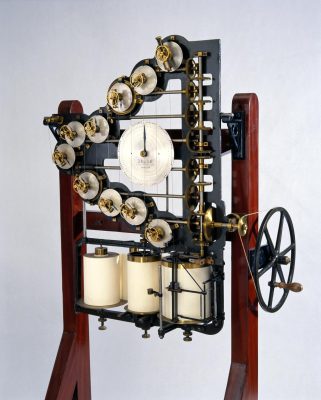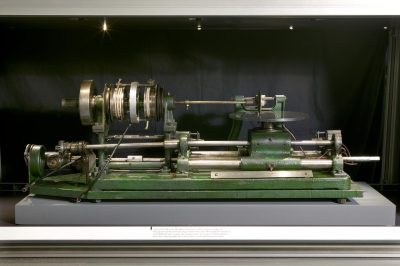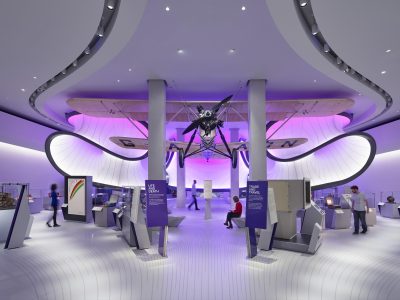Chris Hayhurst is the European Consulting Manager for MathWorks – a developer of mathematical computing software for engineers and scientists. MathWorks is a sponsor of new gallery Mathematics:The Winton Gallery at the Science Museum. Below Chris explores how maths has built the world around us.
What image does maths bring to your mind? For many it might be squared paper and a pencil, a graph, incomprehensible symbols, perhaps beauty or maybe fear. Does it actually help you in your work, your everyday life? In short, does maths work for you? Perhaps if we could get beyond the squared paper, sums and calculators, we could see maths in a new way.
Maths is in fact all around us, ensuring our savings are well invested, the supermarket shelves are stocked with the food we want to eat, our weather forecasts are accurate and that the cars that we drive are safe. In all of these situations, computers have replaced hand calculations and made our everyday lives easier.
The Science Museum’s Mathematics: The Winton Gallery beautifully shows, step by step, how maths has shaped our world.

My favourite object in the gallery is Thomson’s tide predicting machine. In 1876 it was known that tides are influenced by many different factors, combining to produce a complicated pattern. Accurate predictions were very important for shipping but were hard to calculate by hand. Thomson created this mechanism to do this specific task easily. Turning the wheel combined the effects of 10 different tidal influences to generate weeks of predictions for any port or harbour.

Within 60 years, more general purpose machines were being created. This unit from the Hartree differential analyser that occupies a large part of the gallery was built in 1935 and is really a mechanical analogue computer. Originally built to solve problems with electricity distribution grids it could also be re-purposed to apply maths to a whole range of real life problems.
Soon, electronics replaced mechanics, allowing calculations to be carried out much faster. In 1984, MathWorks was founded as a company to allow people to do maths using these computers. The company name meant just what it says – the math works. The software that came from that, MATLAB, made complicated and long winded hand calculations fast. Just as importantly, instead of taking days to re-purpose or program the calculations for the differential analyser above, MATLAB made it easy to apply maths to new problems.

Safe in the knowledge that the maths works, MATLAB has allowed millions of students, engineers and scientists to concentrate on their designs, cars, planes, chemistry, physics or data ever since. Version 1.3 of MATLAB is on display in Mathematics: The Winton Gallery.
Another 30 years on and computers are thousands of times more powerful. The rise of computing power has made it more not less important to have strong maths skills, and yet it doesn’t seem any easier to enthuse people about maths. This is why we at MathWorks were so excited when we heard of the Science Museum’s plan to create Mathematics: The Winton Gallery. This new gallery isn’t a maths lesson but a powerful invitation to see how maths has already shaped our world. Our hope is that this will inspire people to investigate maths further now and go on to fuel engineering and science progress in the future.

MathWorks is proud to sponsor this gallery, helping to give thousands of people every week a glimpse of the wonder of maths. Since partnering with the museum, we have enjoyed showing inspiring applications of maths at events in the Science Museum.
We have shown the asymmetry of encryption – just one line of maths in MATLAB can simulate how an Enigma machine encrypts messages. Cracking those messages was nearly impossible in World War II but was shown to be possible in seconds with today’s powerful parallel computing and statistics.

We have also shown that images can be reduced to numbers and, through maths and machine learning, computers can learn how to recognise photos of objects in the museum without any knowledge of features that could distinguish for example a phone box from a steam engine.


The United Kingdom has a great heritage in engineering and many of our greatest feats are highlighted throughout the Science Museum. Mathematics: The Winton Gallery shows that maths lays the foundation for many of these developments. To continue innovating we need more and more people who are confident, excited about maths, knowing that It can be made to work for them.